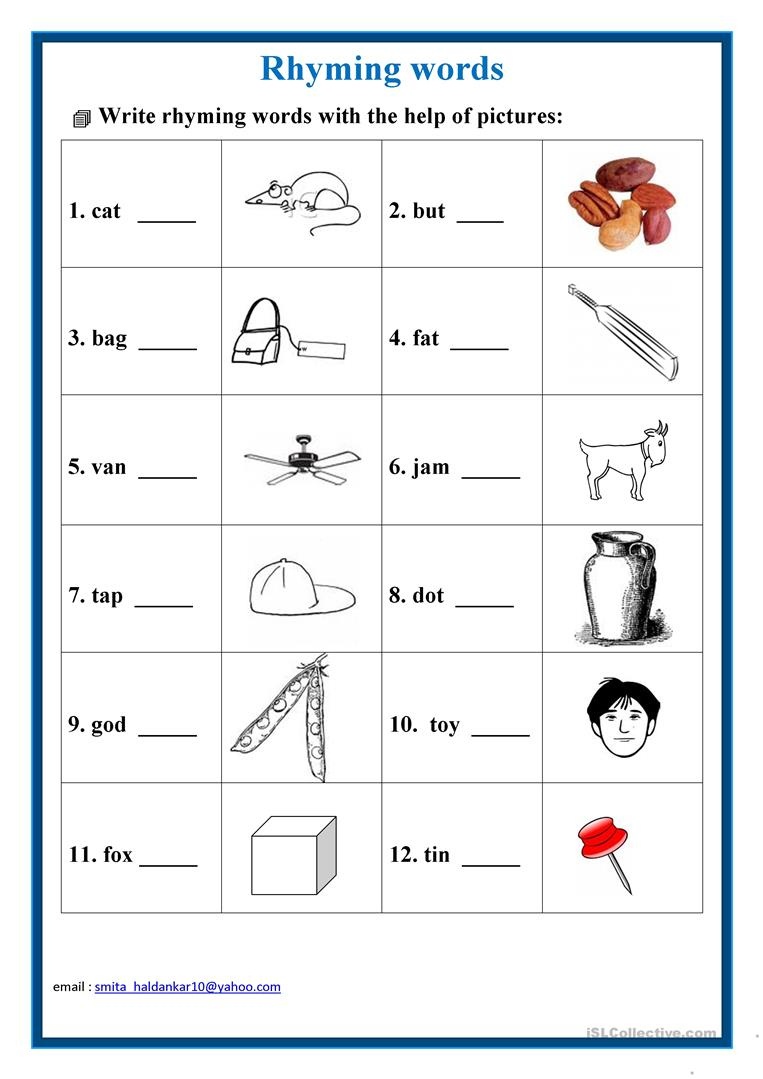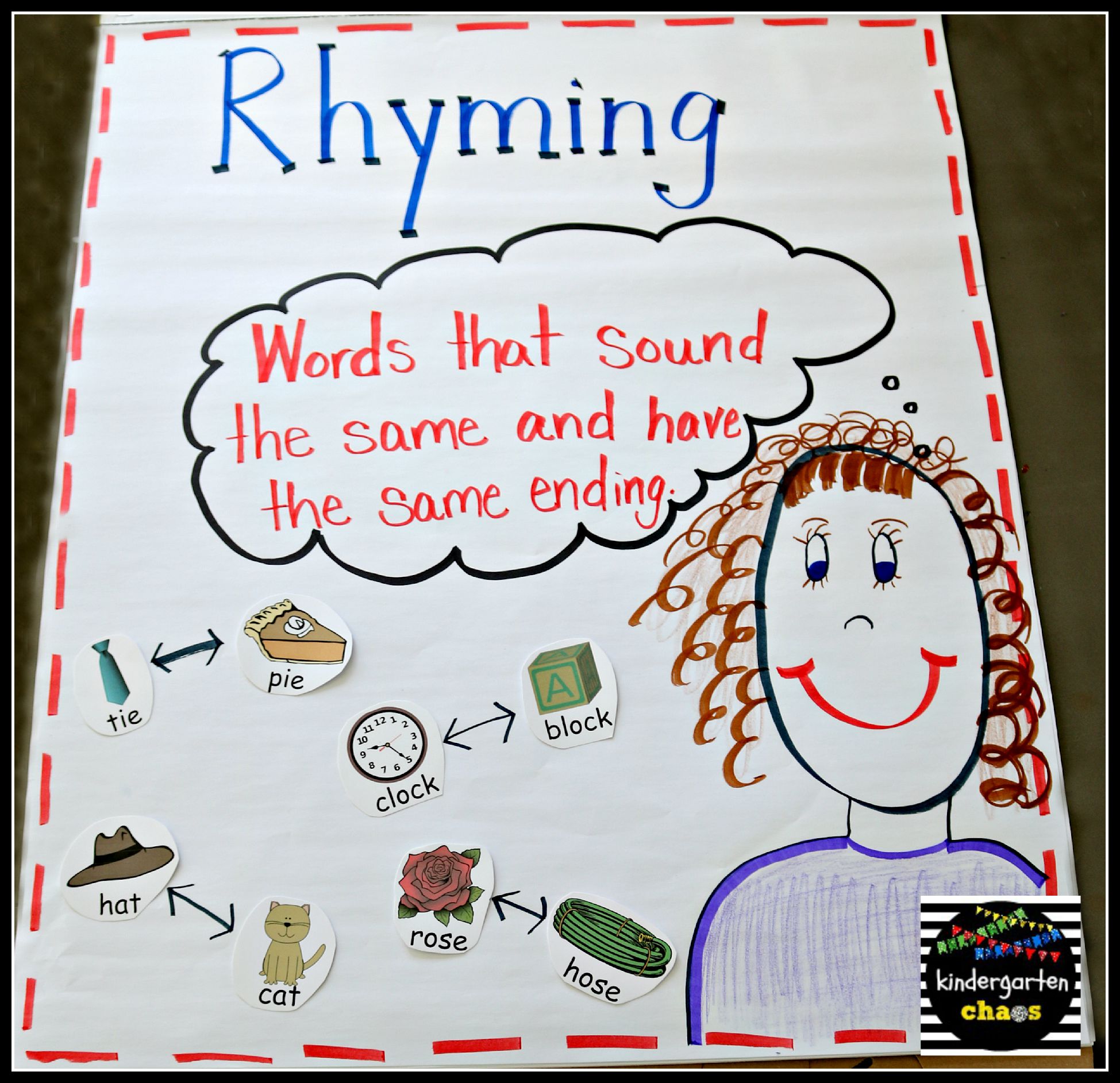


Ub: grub, rub, tub, sub, stub, club, scrub Ip: dip, flip, grip, hip, lip, nip, rip, sip, slip, tip These words are grouped by word family (words that have the same ending sound and spelling).ĬVC words fall into this category as do many sight words.Īn: ban, tan, can, Dan, fan, man, pan, ran, vanĪp: cap, gap, lap, map, nap, rap, tap, zapĪt: cat, bat, fat, hat, mat, pat, sat, flatĮt: bet, let, met, net, pet, set, vet, wet, get

Use this list for the rhyming activities you play. Students need to recognize rhyming words from among the words they know. She needs to learn this process, which is an essential pre-reading skill (to break apart words into their separate sounds and to connect words grouped by sound and spelling patterns) as it builds phonological awareness.
#Rhyming activity kindergarten trial
Then your brain would shop around for other beginning sounds that can be matched with /ool/ to make a word with meaning.Īfter some trial and error, you find /f/, pair it with /ool/, and say “fool.”Īll this is basically automatic for you, but it’s not for your young language learner. Think about it: If I tell you to say a word that rhymes with “cool,” you would need to separate the beginning sound /k/ with the ending sound /ool/. In order to rhyme, you need to be able to mentally break apart the sounds in a word. Learning to rhyme isn’t automatic it’s a learned skill. Get inspired with these preschool and lower elementary rhyming activities. That’s a good thing because rhyming is so beneficial to pre-readers! Kids naturally gravitate toward rhyme they love its sing-song nature.


 0 kommentar(er)
0 kommentar(er)
